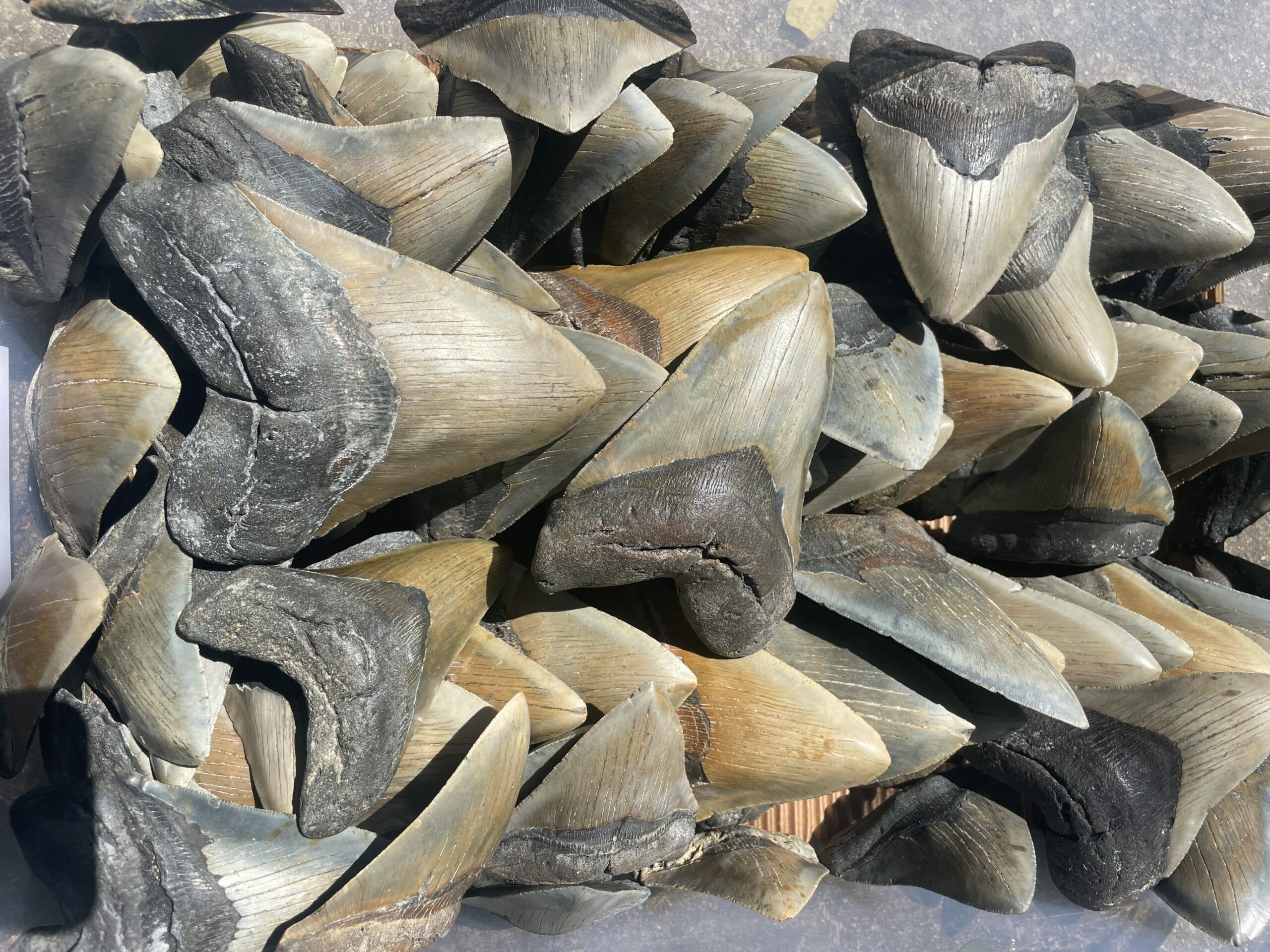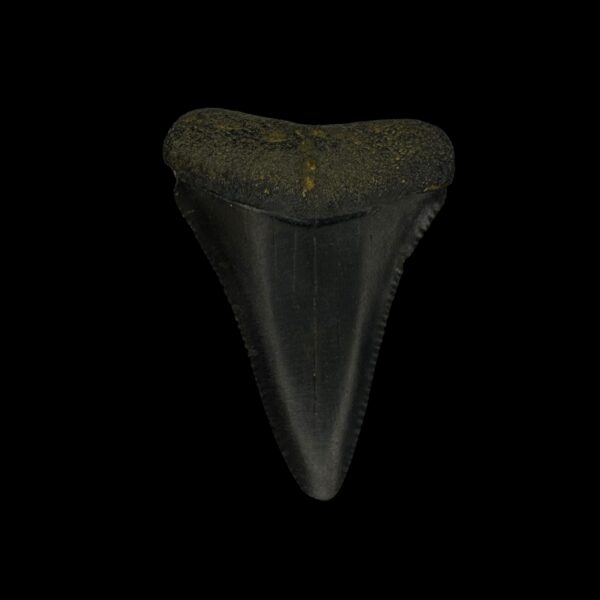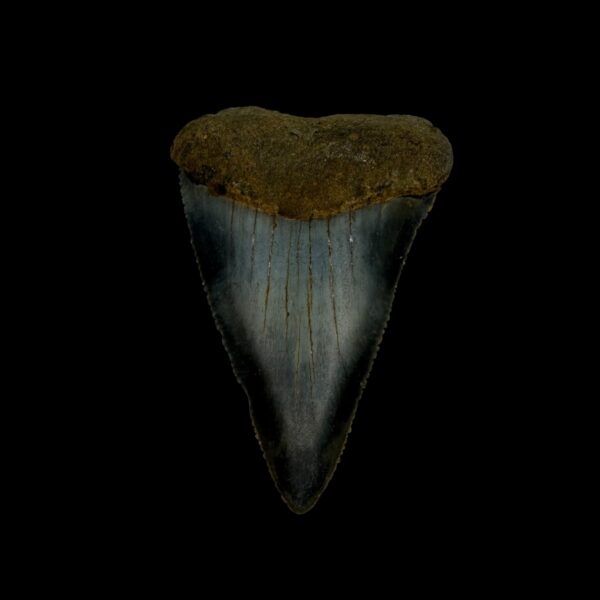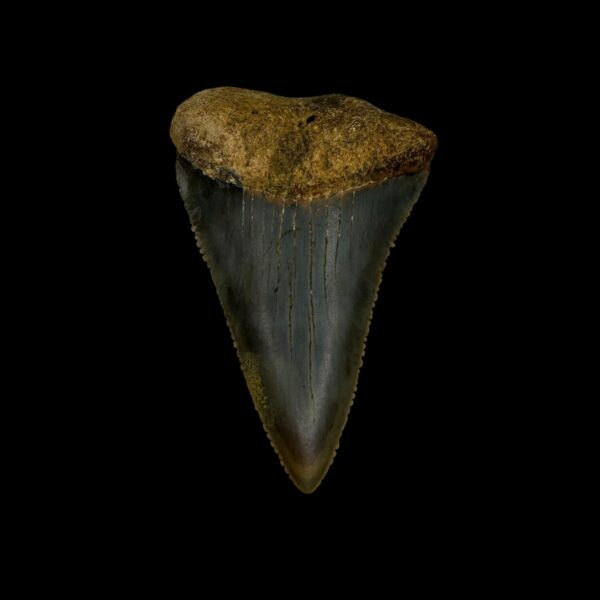How to Tell If a Megalodon Tooth Is Real – 5 Proven Expert Tips

How to Tell If a Megalodon Tooth Is Real – 5 Expert Tips for Buyers
How to tell if a Megalodon tooth is real is not just a common question—it’s an essential skill for any fossil buyer. Whether you’re purchasing online or in person, understanding how to tell if a Megalodon tooth is real can protect you from wasting money on fakes and help you spot incredible finds.
With thousands of fossil shark teeth circulating the market—some genuine, others replicas or restorations—it’s essential to know the difference. Whether you’re a new collector or an experienced enthusiast, identifying authentic Megalodon teeth is key to building a trustworthy collection.
At The Fossil Exchange, we specialize in diving for and selling real Megalodon teeth. Based on years of hands-on experience, we’ve compiled this expert guide with 5 reliable ways to help you determine if the Megalodon tooth you’re holding—or considering buying—is real.
1. Focus on the Shape and Serrations
The first thing to examine when learning how to tell if a Megalodon tooth is real is its shape and serrated edges.
Authentic Megalodon teeth typically have:
A broad, triangular shape
Serrated edges on both sides of the crown
A sturdy, curved root
Subtle imperfections like chips or erosion from millions of years of fossilization
Fake or molded teeth often have smooth, flat edges or serrations that look machine-cut. While some real fossils are damaged or eroded, genuine teeth usually show signs of natural wear—not perfection.
Quick Tip: If the tooth looks “too perfect,” symmetrical, or glossy, there’s a high chance it’s fake or heavily restored.
2. Inspect the Texture and Surface
The second way to know how to tell if a Megalodon tooth is real is by feeling its surface and examining the texture.
Real fossilized Megalodon teeth often display:
A matte or rough enamel surface, not shiny or plastic-like
Color variations caused by minerals in the sediment (black, brown, grey, or bluish tones)
Visible cracks, pitting, or enamel flaking
A rough or porous root texture
In contrast, cast replicas are often made from resin and may appear glossy, smooth, and lack fine details. Some may even have air bubbles or unnatural sheen.
Pro tip: Use a magnifying glass to examine the enamel. Natural fossils will show microtexture and mineral deposits; fakes won’t.
3. Run Simple At-Home Authenticity Tests
Still wondering how to tell if a Megalodon tooth is real? Try these simple tests at home:
Tap Test: Gently tap the tooth on a hard surface. Real teeth make a deep, solid, stone-like sound. Fakes often sound hollow or plastic.
UV Light Test: Shine a UV flashlight on the tooth. Fossils usually don’t glow under UV light; fake materials might.
Magnifying Glass: Look closely at the serrations, cracks, and texture. You should see irregularities and signs of age.
None of these tests are definitive on their own, but together, they give you strong clues about authenticity.
4. Ask the Right Questions About the Tooth’s Origin
One of the best ways to confirm whether a Megalodon tooth is real is to ask the seller detailed questions.
A reputable source should be able to tell you:
Where it was recovered (e.g., North Carolina rivers, offshore Florida, Indonesia)
Whether the tooth is restored, polished, or untouched
The age, estimated between 2.6 and 23 million years
Whether the fossil has been altered or repaired
At The Fossil Exchange, we document every detail of each tooth we sell — including the recovery method, site, and diver.
5. Buy Only from Trusted Experts and Divers
If you truly want to avoid fakes, the best strategy is to buy from trusted fossil experts.
Avoid:
Online auctions with no provenance
Sellers who refuse to answer questions
Listings with overly generic photos or the same photo used in multiple items
Choose fossil shops and divers who:
Provide clear, close-up photos of the actual tooth
Offer origin and recovery details
Have reviews or references in the fossil collecting community
At The Fossil Exchange, every Megalodon tooth is recovered by our own divers, and we provide full transparency with every fossil listed.
Extra Tips: What NOT to Do
Don’t assume all large teeth are Megalodon. Other sharks had big teeth too.
Don’t judge only by color — black or brown does not automatically mean “real.”
Don’t trust any seller that uses words like “replica” or “cast” without full context.
FAQ – How to Tell If a Megalodon Tooth Is Real
Can small Megalodon teeth be real?
Yes! Megalodons had hundreds of teeth in different positions—posterior teeth can be much smaller than the front ones.
Are black fossil teeth always from Megalodons?
No. Many ancient sharks fossilize black due to minerals. You must compare shape, serrations, and thickness.
Can a tooth be partially restored and still be real?
Yes, but it should be disclosed. Many collectors accept light repairs if clearly documented.
Do real Megalodon teeth always have serrations?
Not always. Some are worn down or broken, but most genuine ones have visible serration traces.
Want a Real Megalodon Tooth? Buy With Confidence
At The Fossil Exchange, we’re more than just sellers — we’re divers, collectors, and fossil experts who understand what authenticity means.
All our Megalodon teeth are:
Recovered by our own team
100% natural and fossilized
Carefully inspected and documented
Shipped with clear details about size, condition, and origin
👉 Browse Authentic Megalodon Teeth for Sale
Don’t risk buying replicas or casts. Buy from professionals who live for the thrill of finding and preserving prehistoric history.



